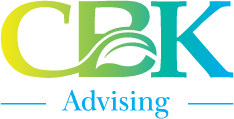Creating A Culture Of Solutions

By Teri A. Coutu
Business Consultant
Over the past few months, business leaders have been tasked with a multitude of challenges. Many were faced with finding ways to maintain productivity as staff worked from home, while others were forced to evaluate if they could remain open amidst COVID restrictions. As States try to re-open (and keep open) their economy, most companies are faced with developing new procedures and the added expense of protection for their employees and the public. Leaders in every industry have had to face this rapidly changing business climate while navigating additional stressors due to monumental social unrest and angst. Of the C-level executives, business owners, and team leaders I’ve spoken to, some have flourished during these times, while others struggled. The determining factors seem to primarily be corporate culture and leadership style.
Problems And Solutions
It’s been interesting to observe how differently people are managing and adapting to the numerous issues facing our society these days. While the news seems to primarily focus on the negatives, inspiring stories continue to emerge highlighting innovative solutions to overwhelming problems. The key, it seems, is all in how you look at it.
Solution-focused leadership is a concept that has been around for years, but never have so many businesses needed it more than these recent months. Similar to looking at the glass as half-full, solution-focused leaders see opportunities where others see problems. They look for small, positive changes, and engage their entire team in creating, testing, and refining solutions that lead to success.
Silver Lining Playbook
Leaders who create a solution-seeking culture are better able to adapt in dynamic and challenging environments such as those our society is facing now. They embrace characteristics that not only benefit themselves but also generate motivated, productive teams who encourage each other.
By creating an environment that looks for strengths instead of deficits, solution-focused leaders inspire their organization to seek useful change and expand upon it without fear of repercussion if it doesn’t work as planned. Each failure is viewed as an opportunity to learn, and everyone on the team is encouraged to contribute to creating solutions.
To be a solutions-focused leader, you must first stop looking at problems as negatives and instead see them for the benefits they offer. Challenges in business, as in life, can be catalysts for positive change. When you engage your team in the solution-finding process, you build their trust in you, their peers, and themselves. This leads to a more motivated, creative, and cooperative atmosphere that is productive and goal-oriented.
Solution-focused leaders see employees as equals and encourage them to use their talents and add to the collective intelligence of the team. They listen carefully, act mindfully, and help employees reach their goals. All of this produces a culture that is just as beneficial to each individual as it is to the organization as a whole. The results include more productive meetings, improved relationships, and the developed potential of each employee.
Solving YOUR Problems
As a leader, creating a solution-focused culture can significantly reduce your stress as you no longer carry the responsibility of fixing everything yourself. Instead, you create an environment that encourages employees, superiors, and other stakeholders to engage in creating a culture of solution-focused behaviors. This continuous practice helps foster operational excellence that results in increased employee and customer satisfaction.
Building a solutions-focused organization doesn’t happen overnight. It starts with leaders who value the development of each dimension of emotional intelligence, and a willingness to be open-minded and vulnerable. Perhaps the most important adjustment is the shifting of focus from looking at problems, to seeing opportunities, and then sparking creative curiosity to ask “what if…?”
So, what if you focused on solutions right now? How might it benefit you and your team?

